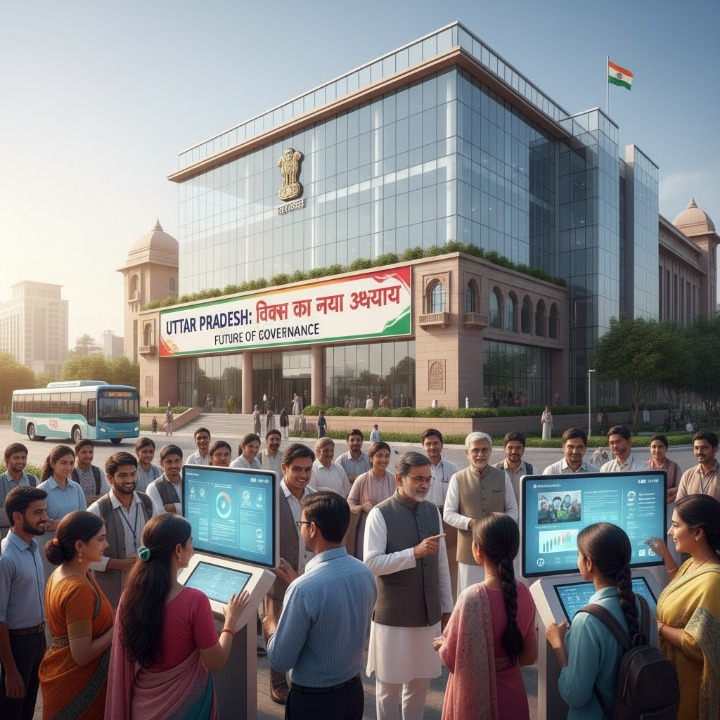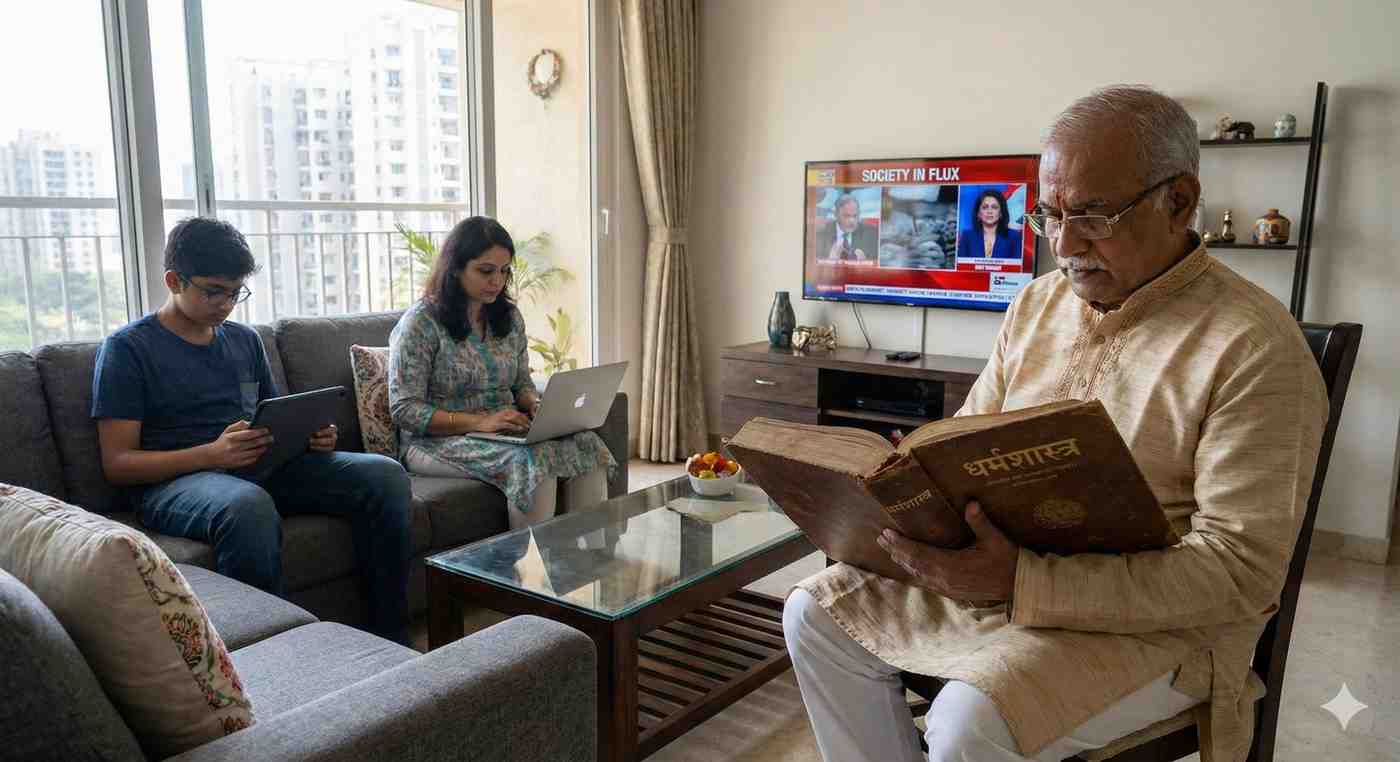
The Future of E-Governance in Uttar Pradesh: Enhancing Service Delivery
- admin
- October 21, 2025
- Tech & Innovation, Uttar Pradesh
- 0 Comments
Revolutionizing governance through technology for transparency, efficiency, and accessibility.
Introduction
Uttar Pradesh, India’s most populous state, is leveraging the power of technology to redefine governance. With a clear focus on citizen-centric solutions, the state is deploying e-governance initiatives to enhance service delivery, improve transparency, and ensure accountability. By integrating digital tools into public administration, Uttar Pradesh is setting the stage for a transformative governance model that is efficient, accessible, and inclusive.
Key E-Governance Initiatives in Uttar Pradesh
1. Integrated Grievance Redressal System (IGRS): Empowering Citizens
The IGRS is a centralized platform designed to handle complaints and grievances from citizens across the state.
- Highlights:
- A seamless online portal where citizens can lodge complaints related to government services.
- Real-time tracking of grievance status with prompt resolution.
- More than 20 lakh grievances addressed since its inception, showcasing its effectiveness.
This initiative ensures that citizens have a direct channel to voice their concerns, fostering trust in governance.
(Source: Uttar Pradesh Samadhan Portal)
2. E-District Project: Simplifying Public Service Access
The E-District Project is a flagship initiative under the Digital India Mission, aimed at digitizing government services for better accessibility.
- Key Features:
- Availability of over 100 services, including certificates for income, domicile, and caste.
- Integration with Common Service Centers (CSCs) to expand reach in rural areas.
- More than 15 crore applications processed digitally, reducing dependency on physical documentation.
This program ensures efficient service delivery, minimizing delays and manual errors.
(Source: E-District Uttar Pradesh)
3. DigiShakti Portal: Bridging the Digital Divide
The DigiShakti Portal aims to empower students by providing digital resources, enabling them to participate in the growing digital economy.
- Features and Impact:
- Distribution of 46.75 lakh digital devices, including tablets and smartphones, to students in need.
- Access to e-learning platforms and skill development programs.
- Enhanced digital literacy, particularly in underserved regions.
This initiative highlights the state’s commitment to fostering digital inclusivity and bridging the urban-rural divide.
(Source: DigiShakti Uttar Pradesh)
4. E-Tendering and Procurement: Ensuring Transparency
Uttar Pradesh has embraced e-tendering to streamline government procurement and infrastructure development.
- Key Outcomes:
- Reduced corruption through transparent bidding processes.
- Faster project approvals and implementation.
- Improved participation from diverse stakeholders, ensuring competitive pricing.
By digitizing procurement, the government is ensuring efficiency and accountability in public projects.
(Source: Government E-Marketplace (GeM))
5. Smart Cities Mission: Technology-Driven Urban Management
Uttar Pradesh’s involvement in the Smart Cities Mission integrates e-governance solutions to enhance urban infrastructure and citizen services.
- Cities Under the Mission:
- Agra, Kanpur, Lucknow, Prayagraj, and Varanasi are among the cities implementing smart technologies.
- Initiatives include real-time traffic management, online utilities payment systems, and public safety measures like AI-enabled surveillance.
Smart Cities projects underscore the state’s vision of creating technologically advanced and citizen-friendly urban spaces.
(Source: Smart Cities Mission)
Challenges in E-Governance Implementation
While Uttar Pradesh has made significant progress, challenges persist:
- Digital Literacy: Limited awareness and skills in rural areas can hinder e-governance adoption.
- Infrastructure Gaps: Ensuring consistent internet connectivity across the state remains a challenge.
- Data Security: Robust measures are required to protect sensitive citizen data from breaches.
Future Prospects
1. AI and Machine Learning Integration
AI-driven solutions can enhance governance by enabling predictive analytics for policy planning and automated citizen support.
2. Blockchain for Transparency
Blockchain technology can be utilized to secure public records and ensure tamper-proof data management.
3. Expansion of Digital Services
Introducing more mobile-friendly platforms will ensure broader accessibility, especially for rural populations.
Opinionated Yet Neutral Perspective
Uttar Pradesh’s e-governance initiatives reflect a forward-thinking approach to governance. The emphasis on transparency, inclusivity, and efficiency is commendable, setting a benchmark for other states. However, to fully realize the potential of these initiatives, sustained efforts in digital literacy, infrastructure expansion, and cybersecurity will be essential. Balancing technological advancements with citizen-centric policies will ensure a governance model that truly serves its people.
Conclusion
The future of e-governance in Uttar Pradesh looks promising, driven by innovative policies and technological integration. By fostering a culture of transparency, accessibility, and accountability, the state is not only improving service delivery but also building trust between the government and its citizens. As these initiatives evolve, Uttar Pradesh is poised to emerge as a leader in digital governance, paving the way for a more connected and efficient India.



